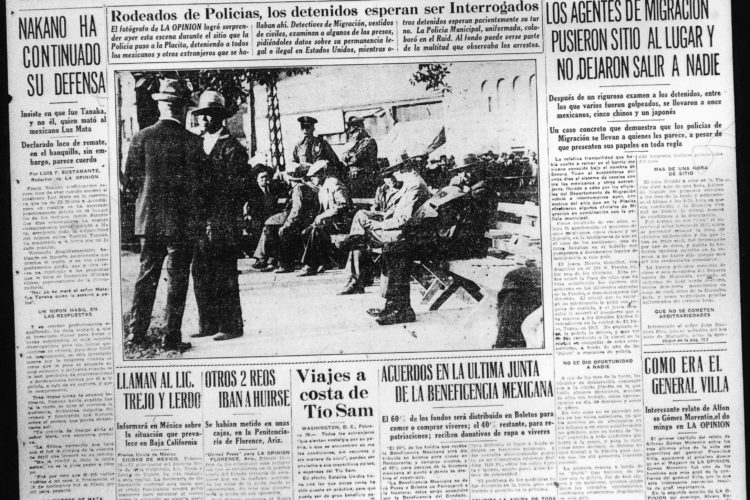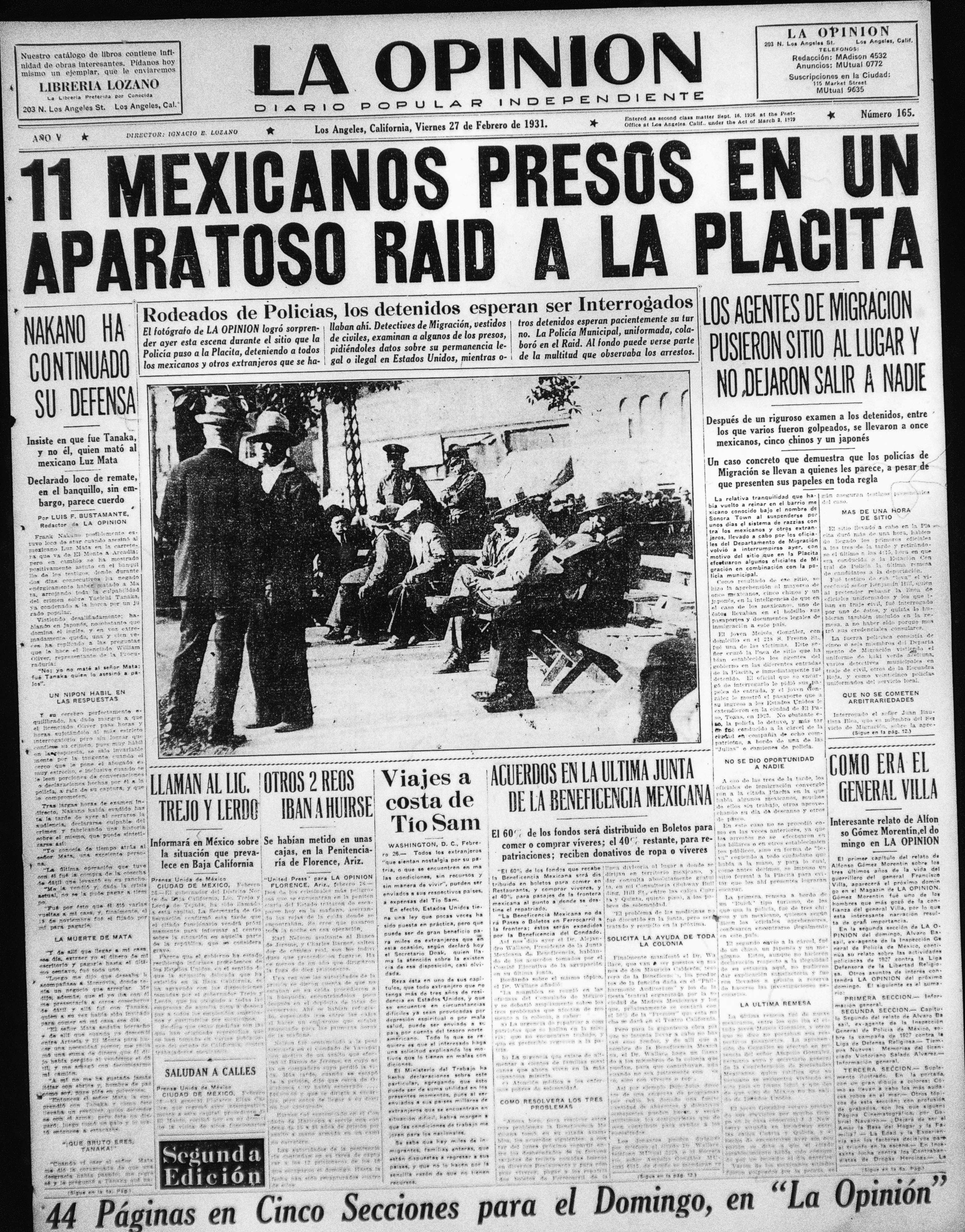On October 30th, 1938, a radio broadcast on the CBS Radio station "The War of…

Mexican Repatriation of the 1930s (a deeper look and sources)
The sight of the deserted plaza stoked his anger like dry grass fed a brushfire. Only a few months ago, La Placita would have been filled with men hoping to be picked for a day job, dozing in the shade, or playing dice. Since the raids, no one gathered outside. Any Mexican man might be arrested at any time. Already they’d lost dozens of men from their colonia, and it was the same in all of Los Angeles county.
La Opinion denounced the unjust measures and sent complaints to the Mexican consulate and even Washington, DC. Officials there answered back that the “deportables” were illegals–or even communists or criminals–but everyone knew what their real crime was: taking jobs from gringos now that jobs were scarce.
—–excerpt from In A Far-Off Land
Many readers of In A Far-Off Land have asked me if mass deporations of Mexicans really happened in 1930s Los Angeles and where can they find more information. The answer is yes, Mexican Repatriation was a sad but true event in our country’s history. Here’s a brief explanation of the hows, whys, and whats, followed by some links if you would like to dive deeper into this historical event.

The great Depression lasted from 1929 through 1939, and during that time between 300,000 and 2 million people of Mexican descent were forcibly returned to Mexico. It is estimated that forty to sixty percent were citizens of the United States and a great number of them were children. Our federal government supported this movement, but it was mostly state and city governments that instigated and carried out the deportations. As with many historical events, some details are disputed among historians and there’s plenty of disagreement, especially now as our struggles with immigration continue.
The plight of Mexicans in California in the 1930s had an important background. The years between 1910 and 1920 saw a great influx of Mexicans crossing the boarder into the United States for two reasons.
- The danger and violence of the Mexican Revolution.
- American railroad and agriculture recruited Mexicans to work in the U.S. Employers went so far as to directly request the president of Mexico to send more labor to them. That’s right, employers ASKED them to come here and then . . .
. . . things changed. The onset of the Great Depression led to a wave of increasing anti-immigrant sentiments. President Herbert Hoover himself called for deportation of Mexicans, and a series in the Saturday Evening Post detailed the racial inferiority of the Mexican people, fueling public sentiment against them.
This was most evident in California, where both population and unemployment were peaking. Many people believed the unemployment was directly related to Mexicans taking the jobs meant for ‘real’ Americans. Raids on Mexican neighborhoods were common, and threats of forcible deportations ‘encouraged’ many families to leave on their own rather than wait to be arrested and put on trains or buses with nothing more than the clothes on their backs.
If you’d like to know more about Mexican Repatriation and the issues that surrounded it, consider looking at these resources.
INS Records of Mexican Repatriation in 1930s: “While many Mexicans left on their own accord, others were aided or pressured by state and local repatriation programs. By the early1930s local governments began to organize repatriation programs designed to remove Mexicans from their relief rolls. The largest and most well-known of these efforts took place in Los Angeles, but several states and localities launched similar efforts.”
History.com has several stories focusing on deportations although most of my research showed that the actual number of deportations is disputed and this article’s claim of 1.8 million is most likely exaggerated. Another article here details more of the history of Mexican immigration and discrimination that took place in schools and housing.
In 2012, the State of California officially apologized for the fundamental violations of civil liberties that took place at this time. The federal government has not made any apology.
For the most comprehensive and balanced view of Mexican immigration, culture, and repatriation you can’t go wrong with this book: Rebirth, Mexican Los Angeles from the Great Migration to the Great Depression, by Douglas Monroy.
If you are interested in more of the historical research that went into In A Far-Off Land, check out this recent podcast with History Through Fiction where we talk about Mexican Repatriation, the changing roll of women in the 1930s, old Hollywood, and the parable of the Prodigal Son.
And if you love historical fiction, make sure you’re receiving my newsletter! I’ll be giving away a n historical fiction novel each month to a random subscriber. Sign up and check your inbox, that’s all you have to do. October’s book is The Four Winds by Kristin Hannah signed by the author. Sign up for my newsletter here and best of luck!



